当前位置:网站首页>[slam] lidar camera external parameter calibration (Hong Kong University marslab) does not need a QR code calibration board
[slam] lidar camera external parameter calibration (Hong Kong University marslab) does not need a QR code calibration board
2022-07-06 03:21:00 【iwander。】
review
Calibration is also a pose estimation problem , It essentially solves the same problem as various laser odometers and visual odometers . The calibration method can also be used for reference in the odometer problem . They all have a common process :
a. feature extraction
b. Feature matching
c. Pose solving
Reference paper : Pixel-level Extrinsic Self Calibration of High Resolution LiDAR and Camera in Targetless Environments
github: https://github.com/hku-mars/livox_camera_calib
This paper is the famous Hong Kong University Mars Lab Produce , What they solve is livox and camera Calibration of . also , There is no need to place a priori object like calibration board or QR code in the environment ! The paper is very long , A lot of space is devoted to introducing their reasons for doing so , Let's skip this part , Just look at what they do in the code .
1. camera image Feature extraction
Extract robust , The feature of high recognition is the most important point . When calibrating the camera , We can use checkerboard , Because it has obvious characteristics , The structure is known , It is easy to realize data association on different photos . about lidar and image for , Their data are different , How to find matching features is the first problem , So they chose Line features . Extracting line features from photos , Yes opencv The way to , Also have learning-based( Example ) The way to . This paper 2D The method of line feature extraction is relatively simple , They used opencv Self contained canny Algorithm ,canny Only the edge information in the photo can be extracted , in other words , It can only tell you which pixel is a straight line point , But I can't tell you which line this pixel belongs to . Generally, different straight lines should be recognized on the photos , To be in canny On the basis of , recycling hough Algorithm or LSD The algorithm further extracts straight lines , These algorithms have been opencv Built in .
void Calibration::edgeDetector(
const int &canny_threshold, const int &edge_threshold,
const cv::Mat &src_img, cv::Mat &edge_img,
pcl::PointCloud<pcl::PointXYZ>::Ptr &edge_cloud)
{
// Gaussian blur
int gaussian_size = 5;
cv::GaussianBlur(src_img, src_img, cv::Size(gaussian_size, gaussian_size), 0, 0);
// Extract edge pixels
cv::Mat canny_result = cv::Mat::zeros(height_, width_, CV_8UC1);
cv::Canny(src_img, canny_result, canny_threshold, canny_threshold * 3, 3, true);
// Group these line points
std::vector<std::vector<cv::Point>> contours;
std::vector<cv::Vec4i> hierarchy;
cv::findContours(canny_result, contours, hierarchy, cv::RETR_EXTERNAL, cv::CHAIN_APPROX_NONE, cv::Point(0, 0));
// If a group has too few points , Then don't , This is equivalent to filtering
edge_img = cv::Mat::zeros(height_, width_, CV_8UC1);
edge_cloud = pcl::PointCloud<pcl::PointXYZ>::Ptr(new pcl::PointCloud<pcl::PointXYZ>);
for (size_t i = 0; i < contours.size(); i++)//contours.size()
{
if (contours[i].size() > edge_threshold)
{
for (size_t j = 0; j < contours[i].size(); j++)
{
//what the use of p ???????
pcl::PointXYZ p;
p.x = contours[i][j].x;
p.y = -contours[i][j].y;
p.z = 0;
edge_img.at<uchar>(-p.y, p.x) = 255;
}
}
}
// Then save the pixel coordinates of the line points to pcl Point cloud
//edge_cloud is the real output
for (int x = 0; x < edge_img.cols; x++)
{
for (int y = 0; y < edge_img.rows; y++)
{
if (edge_img.at<uchar>(y, x) == 255)
{
pcl::PointXYZ p;
p.x = x;
p.y = -y; //TODO -y?
p.z = 0;
edge_cloud->points.push_back(p);
}
}
}
edge_cloud->width = edge_cloud->points.size();
edge_cloud->height = 1;
}In the code , They first did the photo gaussblur Noise removal , Then proceed canny Extract edge pixels . The reason why they finally saved pixels to pcl In the point cloud , Use these points to construct the next kdtree, It's because they need to borrow when matching features pcl Of kdtree Find the nearest neighbor .
2. lidar cloud Feature extraction
Next , The problem becomes how to find those points belonging to line features in the point cloud . Generally speaking , stay 3D Lift the thread in the cloud , You need to bring noodles first , The intersection line between faces is a straight line .github There is also some code for cloud lifting line , for example This article , But the position of the lifting line is not particularly accurate .
pcl There are ready-made face segmentation algorithms , Also use ransac The way to fit a plane . But if the point cloud contains more faces , that ransac It will fail. . So in this code , They divide the point cloud into side lengths 1m Voxels of , For every voxel , There are not many planes inside , Reduce the probability of error . And then use pcl The divider of adopts RANSAC The way to lift the plane , Keep those intersecting and included angles 30-150 Degree plane , Extract intersection . There is another one in the paper depth-continuous edge The concept of . This concept has spent a lot of time in the paper . The general meaning is that the extracted straight line is not the whole segment , Only keep the small segment close to the model point cloud , If a certain position of the intersection line is very close to both plane point clouds , Then it will be selected . These small lines are in the paper depth-continuous edge, The code is actually very short .
So , When calibrating , You can't be in the wilderness, deep mountains and forests , It is better to have some angular buildings in the surrounding environment , For example, the campus of Hong Kong University .
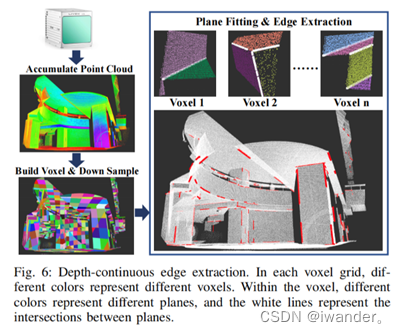
void Calibration::LiDAREdgeExtraction(
const std::unordered_map<VOXEL_LOC, Voxel *> &voxel_map,
const float ransac_dis_thre, const int plane_size_threshold, //0.02, 60
pcl::PointCloud<pcl::PointXYZI>::Ptr &lidar_line_cloud_3d)
{
ROS_INFO_STREAM("Extracting Lidar Edge");
ros::Rate loop(5000);
lidar_line_cloud_3d = pcl::PointCloud<pcl::PointXYZI>::Ptr(new pcl::PointCloud<pcl::PointXYZI>);
for (auto iter = voxel_map.begin(); iter != voxel_map.end(); iter++)
{
if (iter->second->cloud->size() > 50)
{
std::vector<Plane> plane_list;
//1. Create a voxel filter
pcl::PointCloud<pcl::PointXYZI>::Ptr cloud_filter(new pcl::PointCloud<pcl::PointXYZI>);
pcl::copyPointCloud(*iter->second->cloud, *cloud_filter);
// Create a model parameter object , Used to record results
pcl::ModelCoefficients::Ptr coefficients(new pcl::ModelCoefficients);
// inliers Indicates the point where the error can be tolerated , Record point cloud serial number
pcl::PointIndices::Ptr inliers(new pcl::PointIndices);
// Create a splitter
pcl::SACSegmentation<pcl::PointXYZI> seg;
// Optional, Set whether the points displayed on the result plane are the separated points or the remaining points
seg.setOptimizeCoefficients(true);
// Mandatory- Set the target geometry
seg.setModelType(pcl::SACMODEL_PLANE);
// Segmentation method : Random sampling
seg.setMethodType(pcl::SAC_RANSAC);
// Set the error tolerance range , That's the threshold
if (iter->second->voxel_origin[0] < 10)
{
seg.setDistanceThreshold(ransac_dis_thre);
}
else
{
seg.setDistanceThreshold(ransac_dis_thre);
}
//2. Point cloud segmentation , Extract plane
pcl::PointCloud<pcl::PointXYZRGB> color_planner_cloud;
int plane_index = 0;
while (cloud_filter->points.size() > 10)
{
pcl::PointCloud<pcl::PointXYZI> planner_cloud;
pcl::ExtractIndices<pcl::PointXYZI> extract;
// Enter the point cloud
seg.setInputCloud(cloud_filter);
seg.setMaxIterations(500);
// Split point cloud
seg.segment(*inliers, *coefficients);
if (inliers->indices.size() == 0)
{
ROS_INFO_STREAM("Could not estimate a planner model for the given dataset");
break;
}
extract.setIndices(inliers);
extract.setInputCloud(cloud_filter);
extract.filter(planner_cloud);
if (planner_cloud.size() > plane_size_threshold)
{
pcl::PointCloud<pcl::PointXYZRGB> color_cloud;
std::vector<unsigned int> colors;
colors.push_back(static_cast<unsigned int>(rand() % 256));
colors.push_back(static_cast<unsigned int>(rand() % 256));
colors.push_back(static_cast<unsigned int>(rand() % 256));
pcl::PointXYZ p_center(0, 0, 0);
for (size_t i = 0; i < planner_cloud.points.size(); i++)
{
pcl::PointXYZRGB p;
p.x = planner_cloud.points[i].x;
p.y = planner_cloud.points[i].y;
p.z = planner_cloud.points[i].z;
p_center.x += p.x;
p_center.y += p.y;
p_center.z += p.z;
p.r = colors[0];
p.g = colors[1];
p.b = colors[2];
color_cloud.push_back(p);
color_planner_cloud.push_back(p);
}
p_center.x = p_center.x / planner_cloud.size();
p_center.y = p_center.y / planner_cloud.size();
p_center.z = p_center.z / planner_cloud.size();
Plane single_plane;
single_plane.cloud = planner_cloud;
single_plane.p_center = p_center;
single_plane.normal << coefficients->values[0], coefficients->values[1], coefficients->values[2];
single_plane.index = plane_index;
plane_list.push_back(single_plane);
plane_index++;
}
//3. The remaining point cloud after extracting the plane , unused
extract.setNegative(true);
pcl::PointCloud<pcl::PointXYZI> cloud_f;
extract.filter(cloud_f);
*cloud_filter = cloud_f;
}
if (plane_list.size() >= 2)
{
sensor_msgs::PointCloud2 planner_cloud2;
pcl::toROSMsg(color_planner_cloud, planner_cloud2);
planner_cloud2.header.frame_id = "livox";
planner_cloud_pub_.publish(planner_cloud2);
//loop.sleep();
}
//4. Get the plane intersection point cloud
std::vector<pcl::PointCloud<pcl::PointXYZI>> line_cloud_list;
calcLine(plane_list, voxel_size_, iter->second->voxel_origin, line_cloud_list);
// ouster 5,normal 3
//if contains too many lines, it is more likely to have fake lines
if (line_cloud_list.size() > 0 && line_cloud_list.size() <= 8)
{
for (size_t cloud_index = 0; cloud_index < line_cloud_list.size(); cloud_index++)
{
for (size_t i = 0; i < line_cloud_list[cloud_index].size(); i++)
{
pcl::PointXYZI p = line_cloud_list[cloud_index].points[i];
plane_line_cloud_->points.push_back(p);
sensor_msgs::PointCloud2 pub_cloud;
pcl::toROSMsg(line_cloud_list[cloud_index], pub_cloud);
pub_cloud.header.frame_id = "livox";
line_cloud_pub_.publish(pub_cloud);
//loop.sleep();
plane_line_number_.push_back(line_number_);
}
line_number_++;
}
}
}
}
}After dividing the planes within a voxel range , Seeking a straight line is more violent . Because there are not many planes in a voxel , Then it's good to be violent between the two , This part of the code is in this function :
void Calibration::calcLine(
const std::vector<Plane> &plane_list, const double voxel_size,
const Eigen::Vector3d origin,
std::vector<pcl::PointCloud<pcl::PointXYZI>> &line_cloud_list)
{
...
//5. if current location is close to both 2 plane clouds, so the point is on the depth contiuous edge
if ((dis1 < min_line_dis_threshold_*min_line_dis_threshold_ && dis2 < max_line_dis_threshold_*max_line_dis_threshold_) || (dis1 < max_line_dis_threshold_*max_line_dis_threshold_ && dis2 < min_line_dis_threshold_*min_line_dis_threshold_))
{
line_cloud.push_back(p);
}
...
}that if Your judgment is about depth-continuous edge.
3. lidar-camera Feature association
Whether extracted from point clouds 3D Line , still image Extracted from 2D Line , The author did not use something similar to Ax+By+Cz+D=0 To describe , It is still saved in the form of points . When 3D When the line point is re projected to the plane , Just use image Constructed by pixels kdtree Query the nearest neighbor as a set of associated data , Don't use all kinds of trick, A simple and efficient . In the code ,void Calibration::buildVPnp() Is the function of constructing feature matching .
//find the correspondance of 3D points and 2D points with their directions
void Calibration::buildVPnp(
const Vector6d &extrinsic_params, const int dis_threshold,
const bool show_residual,
const pcl::PointCloud<pcl::PointXYZ>::Ptr &cam_edge_cloud_2d,
const pcl::PointCloud<pcl::PointXYZI>::Ptr &lidar_line_cloud_3d,
std::vector<VPnPData> &pnp_list)
{
//1.initialize containers for 3D lines: for each pixel there is a corresponding cloud
//because some closed 3D points may preject onto same pixel, so the container helpes to calculate averagy value
pnp_list.clear();
std::vector<std::vector<std::vector<pcl::PointXYZI>>> img_pts_container;
for (int y = 0; y < height_; y++)
{
std::vector<std::vector<pcl::PointXYZI>> row_pts_container;
for (int x = 0; x < width_; x++)
{
std::vector<pcl::PointXYZI> col_pts_container;
row_pts_container.push_back(col_pts_container);
}
img_pts_container.push_back(row_pts_container);
}
//2.get 3D lines, initial pose, intrinsics
std::vector<cv::Point3d> pts_3d;
Eigen::AngleAxisd rotation_vector3;
rotation_vector3 = Eigen::AngleAxisd(extrinsic_params[0], Eigen::Vector3d::UnitZ()) *
Eigen::AngleAxisd(extrinsic_params[1], Eigen::Vector3d::UnitY()) *
Eigen::AngleAxisd(extrinsic_params[2], Eigen::Vector3d::UnitX());
for (size_t i = 0; i < lidar_line_cloud_3d->size(); i++)
{
pcl::PointXYZI point_3d = lidar_line_cloud_3d->points[i];
pts_3d.emplace_back(cv::Point3d(point_3d.x, point_3d.y, point_3d.z));
}
cv::Mat camera_matrix = (cv::Mat_<double>(3, 3) << fx_, 0.0, cx_, 0.0, fy_, cy_, 0.0, 0.0, 1.0);
cv::Mat distortion_coeff = (cv::Mat_<double>(1, 5) << k1_, k2_, p1_, p2_, k3_);
cv::Mat r_vec = (cv::Mat_<double>(3, 1)
<< rotation_vector3.angle() * rotation_vector3.axis().transpose()[0],
rotation_vector3.angle() * rotation_vector3.axis().transpose()[1],
rotation_vector3.angle() * rotation_vector3.axis().transpose()[2]);
cv::Mat t_vec = (cv::Mat_<double>(3, 1) << extrinsic_params[3], extrinsic_params[4], extrinsic_params[5]);
// debug
// std::cout << "camera_matrix:" << camera_matrix << std::endl;
// std::cout << "distortion_coeff:" << distortion_coeff << std::endl;
// std::cout << "r_vec:" << r_vec << std::endl;
// std::cout << "t_vec:" << t_vec << std::endl;
// std::cout << "pts 3d size:" << pts_3d.size() << std::endl;
//3.project 3d-points into image view and fall into the container, look out these info are from 3D lines
std::vector<cv::Point2d> pts_2d;
cv::projectPoints(pts_3d, r_vec, t_vec, camera_matrix, distortion_coeff, pts_2d);
pcl::PointCloud<pcl::PointXYZ>::Ptr line_edge_cloud_2d(new pcl::PointCloud<pcl::PointXYZ>);
std::vector<int> line_edge_cloud_2d_number;
for (size_t i = 0; i < pts_2d.size(); i++)
{
pcl::PointXYZ p;
p.x = pts_2d[i].x;
p.y = -pts_2d[i].y;
p.z = 0;
pcl::PointXYZI pi_3d;
pi_3d.x = pts_3d[i].x;
pi_3d.y = pts_3d[i].y;
pi_3d.z = pts_3d[i].z;
pi_3d.intensity = 1;
if (p.x > 0 && p.x < width_ && pts_2d[i].y > 0 && pts_2d[i].y < height_)
{
if (img_pts_container[pts_2d[i].y][pts_2d[i].x].size() == 0)
{
line_edge_cloud_2d->points.push_back(p);
line_edge_cloud_2d_number.push_back(plane_line_number_[i]);
img_pts_container[pts_2d[i].y][pts_2d[i].x].push_back(pi_3d);
}
else
{
img_pts_container[pts_2d[i].y][pts_2d[i].x].push_back(pi_3d);
}
}
}
if (show_residual)
{
cv::Mat residual_img = getConnectImg(dis_threshold, cam_edge_cloud_2d, line_edge_cloud_2d);
cv::imshow("residual", residual_img);
cv::waitKey(50);
}
//4.build kdtree to find the closest 2D point of each 3D point
pcl::search::KdTree<pcl::PointXYZ>::Ptr kdtree(new pcl::search::KdTree<pcl::PointXYZ>());
pcl::search::KdTree<pcl::PointXYZ>::Ptr kdtree_lidar(new pcl::search::KdTree<pcl::PointXYZ>());
pcl::PointCloud<pcl::PointXYZ>::Ptr search_cloud = pcl::PointCloud<pcl::PointXYZ>::Ptr(new pcl::PointCloud<pcl::PointXYZ>);
pcl::PointCloud<pcl::PointXYZ>::Ptr tree_cloud = pcl::PointCloud<pcl::PointXYZ>::Ptr(new pcl::PointCloud<pcl::PointXYZ>);
pcl::PointCloud<pcl::PointXYZ>::Ptr tree_cloud_lidar = pcl::PointCloud<pcl::PointXYZ>::Ptr(new pcl::PointCloud<pcl::PointXYZ>);
kdtree->setInputCloud(cam_edge_cloud_2d);
kdtree_lidar->setInputCloud(line_edge_cloud_2d);
tree_cloud = cam_edge_cloud_2d;
tree_cloud_lidar = line_edge_cloud_2d;
search_cloud = line_edge_cloud_2d;
// Specify the number of nearest neighbors
int K = 5;
// Create two vectors , Store the index values of the nearest neighbors respectively 、 The center distance of the nearest neighbor
std::vector<int> pointIdxNKNSearch(K);
std::vector<float> pointNKNSquaredDistance(K);
std::vector<int> pointIdxNKNSearchLidar(K);
std::vector<float> pointNKNSquaredDistanceLidar(K);
int match_count = 0;
double mean_distance;
int line_count = 0;
std::vector<cv::Point2d> lidar_2d_list;
std::vector<cv::Point2d> img_2d_list;
std::vector<Eigen::Vector2d> camera_direction_list;
std::vector<Eigen::Vector2d> lidar_direction_list;
std::vector<int> lidar_2d_number;
//scan each 3D point
for (size_t i = 0; i < search_cloud->points.size(); i++)
{
pcl::PointXYZ searchPoint = search_cloud->points[i];
if ((kdtree ->nearestKSearch(searchPoint, K, pointIdxNKNSearch, pointNKNSquaredDistance) > 0) &&
(kdtree_lidar->nearestKSearch(searchPoint, K, pointIdxNKNSearchLidar, pointNKNSquaredDistanceLidar) > 0))
{
bool dis_check = true;
for (int j = 0; j < K; j++)
{
float distance = sqrt(pow(searchPoint.x - tree_cloud->points[pointIdxNKNSearch[j]].x, 2) +
pow(searchPoint.y - tree_cloud->points[pointIdxNKNSearch[j]].y, 2));
if (distance > dis_threshold)
{
dis_check = false;
}
}
//5.calculate the direction of 3D lines and 2D lines on pixel frame
//if the distances with all 5 closest 2D points is <20
if (dis_check)
{
Eigen::Vector2d direction_cam(0, 0);
std::vector<Eigen::Vector2d> points_cam;
for (size_t i = 0; i < pointIdxNKNSearch.size(); i++)
{
Eigen::Vector2d p(tree_cloud->points[pointIdxNKNSearch[i]].x, tree_cloud->points[pointIdxNKNSearch[i]].y);
points_cam.push_back(p);
}
calcDirection(points_cam, direction_cam);
Eigen::Vector2d direction_lidar(0, 0);
std::vector<Eigen::Vector2d> points_lidar;
for (size_t i = 0; i < pointIdxNKNSearch.size(); i++)
{
Eigen::Vector2d p(tree_cloud_lidar->points[pointIdxNKNSearchLidar[i]].x, tree_cloud_lidar->points[pointIdxNKNSearchLidar[i]].y);
points_lidar.push_back(p);
}
calcDirection(points_lidar, direction_lidar);
// direction.normalize();
cv::Point p_l_2d(search_cloud->points[i].x, -search_cloud->points[i].y);
cv::Point p_c_2d(tree_cloud->points[pointIdxNKNSearch[0]].x, -tree_cloud->points[pointIdxNKNSearch[0]].y);
if (checkFov(p_l_2d))
{
lidar_2d_list.push_back(p_l_2d); //projected point of the 3D point
img_2d_list.push_back(p_c_2d); //corresponding 2D point
camera_direction_list.push_back(direction_cam); //direction of corresponding 2D point
lidar_direction_list.push_back(direction_lidar); //direction of the projected point of the 3D point
lidar_2d_number.push_back(line_edge_cloud_2d_number[i]); //the idx of each 3D lines
}
}
}
}
//6.build correspondance
for (size_t i = 0; i < lidar_2d_list.size(); i++)
{
int y = lidar_2d_list[i].y;
int x = lidar_2d_list[i].x;
int pixel_points_size = img_pts_container[y][x].size();
if (pixel_points_size > 0)
{
VPnPData pnp;
pnp.x = 0;
pnp.y = 0;
pnp.z = 0;
//corresponding 2D point
pnp.u = img_2d_list[i].x;
pnp.v = img_2d_list[i].y;
//3D point (averaged), TODO what if they are far to each other?
for (size_t j = 0; j < pixel_points_size; j++)
{
pnp.x += img_pts_container[y][x][j].x;
pnp.y += img_pts_container[y][x][j].y;
pnp.z += img_pts_container[y][x][j].z;
}
pnp.x = pnp.x / pixel_points_size;
pnp.y = pnp.y / pixel_points_size;
pnp.z = pnp.z / pixel_points_size;
//direction of corresponding 2D point
pnp.direction = camera_direction_list[i];
//direction of the projected point of the 3D point
pnp.direction_lidar = lidar_direction_list[i];
//the idx of the 3D line which the 3D point belongs to
pnp.number = lidar_2d_number[i];
float theta = pnp.direction.dot(pnp.direction_lidar);
if (theta > direction_theta_min_ || theta < direction_theta_max_) //-30-+30, 150-270 deg.
{
pnp_list.push_back(pnp);
}
}
}
}about 3D Every line of point cloud , According to the current external parameters Tcl Initial value of , Internal reference K Projection to image On , Get a pixel coordinate , Then the query kdree Find the recent ones that just passed canny Algorithm extracted 2D Pixels , With these pixels, we can calculate an average , Line vector , You can get a set of feature matching :
3D spot +2D spot /2D Point vector .
In the final analysis , What you get is (lidar) Point and (image) Matching relationship between points , Of course, it can also be regarded as (lidar) Point and (image) The matching relationship of lines , Because the latter preserves the line vector . Also have Other options The saved 3D Line and 2D Lines are described by two endpoints , In the true sense (lidar) Line and (image) Match between lines .
4. Optimization model
The loss function is a common point - Line distance or point - A little distance . about 3D spot , According to the to be optimized Tcl go to cam system , Convert to pixel coordinates , To distort , In matching 2D Point out the pixel distance as residual.
vpnp_calib(VPnPData p) {pd = p;}
template <typename T>
bool operator()(const T *_q, const T *_t, T *residuals) const
{
//camera param
Eigen::Matrix<T, 3, 3> innerT = inner.cast<T>();
Eigen::Matrix<T, 4, 1> distorT = distor.cast<T>();
const T &fx = innerT.coeffRef(0, 0);
const T &cx = innerT.coeffRef(0, 2);
const T &fy = innerT.coeffRef(1, 1);
const T &cy = innerT.coeffRef(1, 2);
//initial value of Tcl
Eigen::Quaternion<T> q_incre{_q[3], _q[0], _q[1], _q[2]};
Eigen::Matrix<T, 3, 1> t_incre{_t[0], _t[1], _t[2]};
//project 3D point onto pixel frame
Eigen::Matrix<T, 3, 1> p_l(T(pd.x), T(pd.y), T(pd.z));
Eigen::Matrix<T, 3, 1> p_c = q_incre.toRotationMatrix() * p_l + t_incre;
Eigen::Matrix<T, 3, 1> p_2 = innerT * p_c;
T uo = p_2[0] / p_2[2];
T vo = p_2[1] / p_2[2];
//undistort
T xo = (uo - cx) / fx;
T yo = (vo - cy) / fy;
T r2 = xo * xo + yo * yo;
T r4 = r2 * r2;
T distortion = 1.0 + distorT[0] * r2 + distorT[1] * r4;
T xd = xo * distortion + (distorT[2] * xo * yo + distorT[2] * xo * yo) + distorT[3] * (r2 + xo * xo + xo * xo);
T yd = yo * distortion + distorT[3] * xo * yo + distorT[3] * xo * yo + distorT[2] * (r2 + yo * yo + yo * yo);
T ud = fx * xd + cx;
T vd = fy * yd + cy;
if (T(pd.direction(0)) == T(0.0) && T(pd.direction(1)) == T(0.0))
{
residuals[0] = ud - T(pd.u);
residuals[1] = vd - T(pd.v);
}
else
{
residuals[0] = ud - T(pd.u);
residuals[1] = vd - T(pd.v);
Eigen::Matrix<T, 2, 2> I = Eigen::Matrix<float, 2, 2>::Identity().cast<T>();
Eigen::Matrix<T, 2, 1> n = pd.direction.cast<T>();
Eigen::Matrix<T, 1, 2> nt = pd.direction.transpose().cast<T>();
Eigen::Matrix<T, 2, 2> V = n * nt;
V = I - V;
Eigen::Matrix<T, 2, 2> R = Eigen::Matrix<float, 2, 2>::Zero().cast<T>();
R.coeffRef(0, 0) = residuals[0];
R.coeffRef(1, 1) = residuals[1];
R = V * R * V.transpose();
residuals[0] = R.coeffRef(0, 0);
residuals[1] = R.coeffRef(1, 1);
}
return true;
}
边栏推荐
- Deep parsing pointer and array written test questions
- OCR文字识别方法综述
- 1003 emergency (25 points), "DIJ deformation"
- What is the investment value of iFLYTEK, which does not make money?
- 1.16 - 校验码
- Performance analysis of user login TPS low and CPU full
- SD卡報錯“error -110 whilst initialising SD card
- 施努卡:什么是视觉定位系统 视觉系统如何定位
- February 14, 2022 Daily: Google long article summarizes the experience of building four generations of TPU
- mysqldump数据备份
猜你喜欢
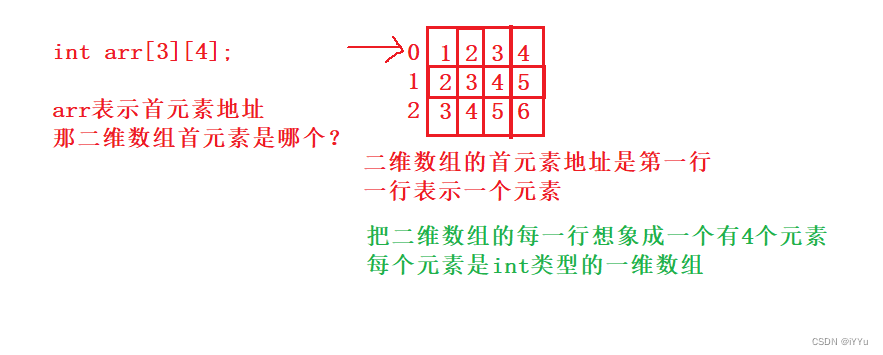
Explore pointers and pointer types in depth

深入刨析的指针(题解)
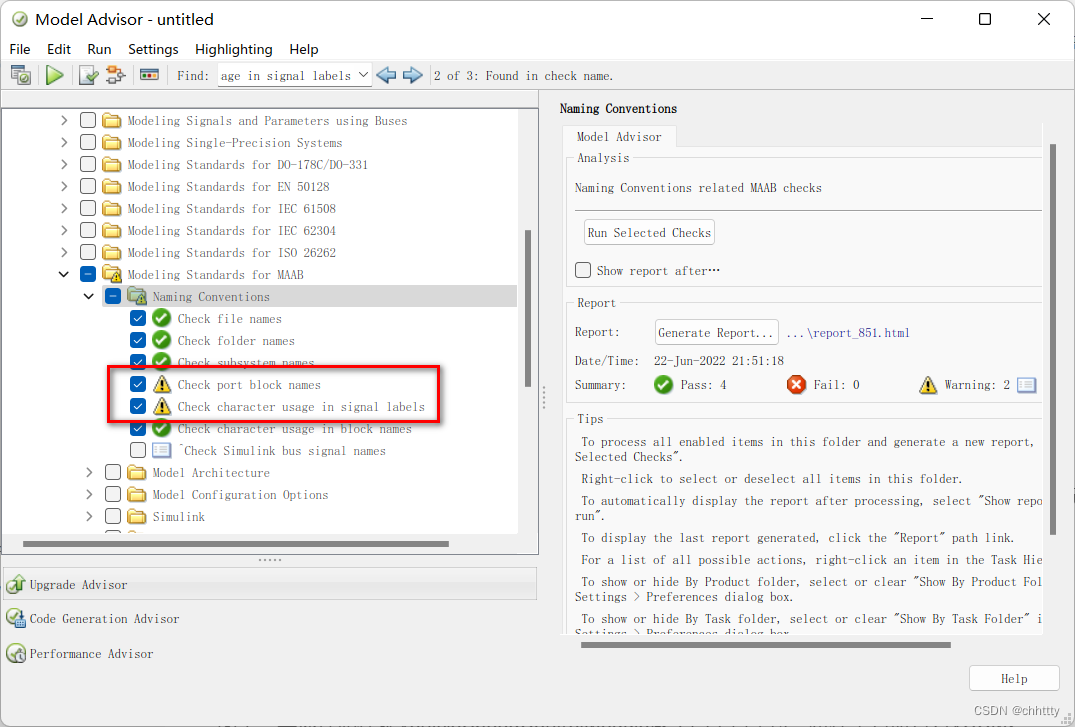
Modeling specifications: naming conventions
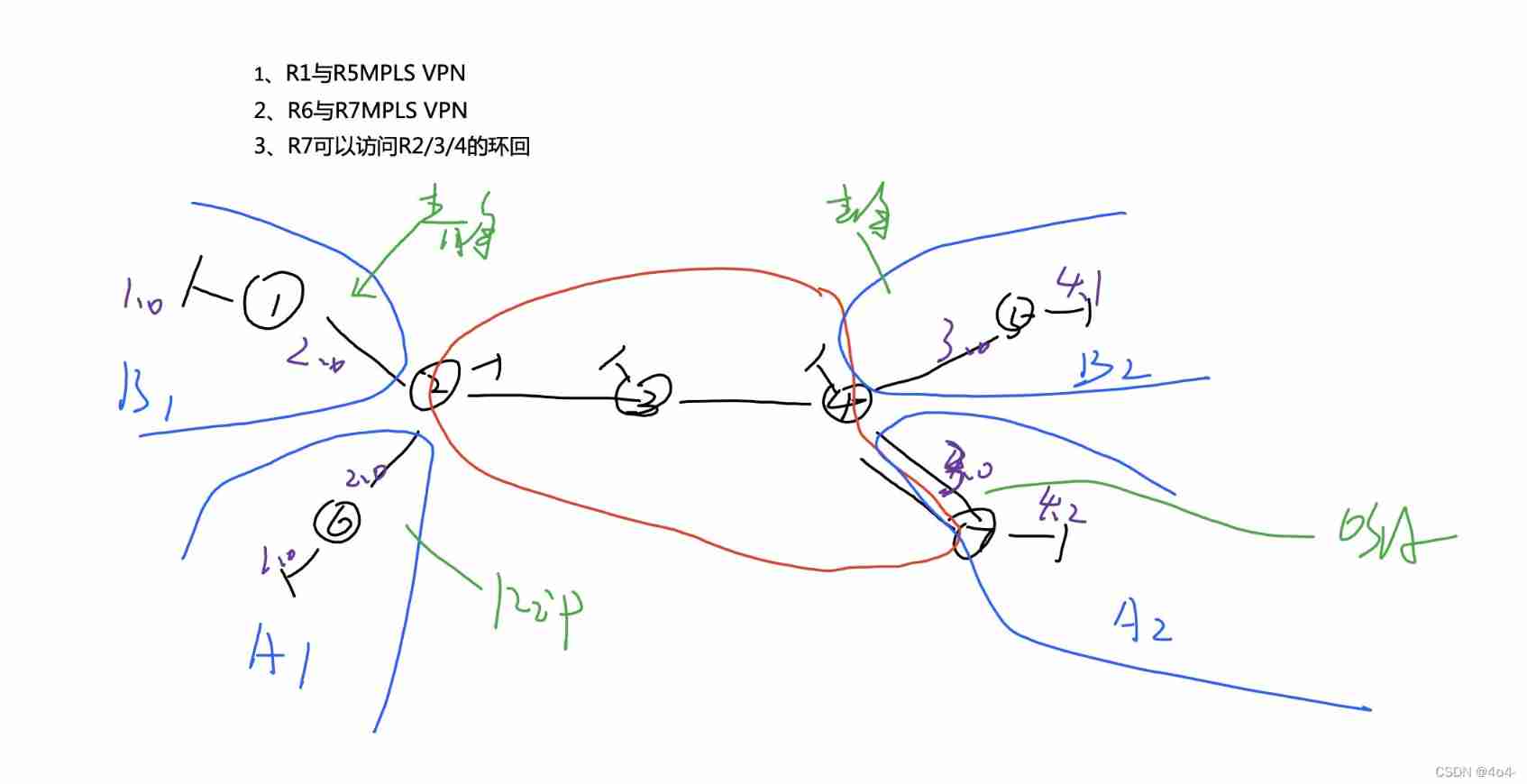
MPLS experiment
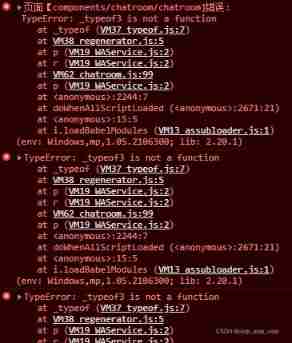
Reverse repackaging of wechat applet
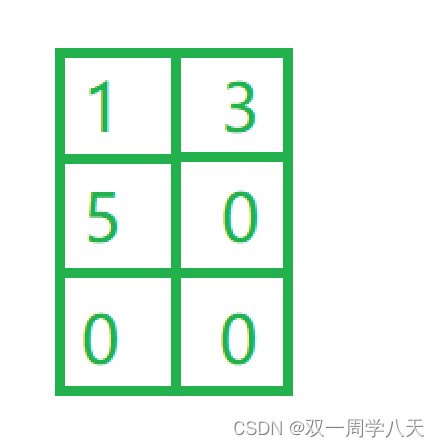
Eight super classic pointer interview questions (3000 words in detail)

Performance test method of bank core business system
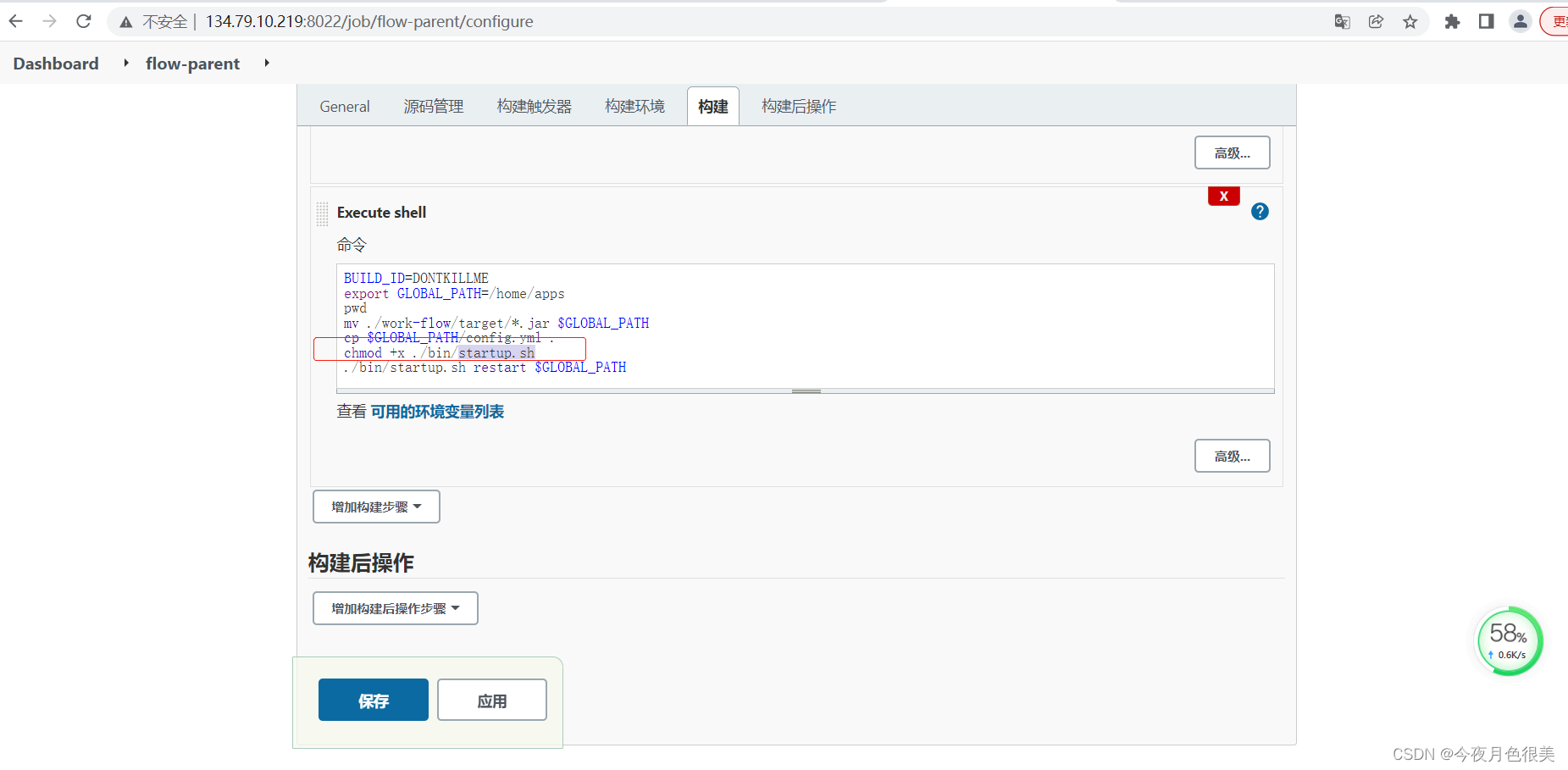
Problems encountered in 2022 work IV
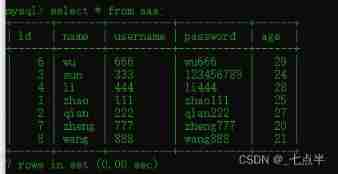
Mysql database operation

Map sorts according to the key value (ascending plus descending)
随机推荐
JS regular filtering and adding image prefixes in rich text
SWC介绍
IPv6 comprehensive experiment
Add one to non negative integers in the array
Lua uses require to load the shared library successfully, but the return is Boolean (always true)
Advanced learning of MySQL -- Fundamentals -- isolation level of transactions
适合程序员学习的国外网站推荐
Leetcode problem solving -- 108 Convert an ordered array into a binary search tree
Who is the winner of PTA
Leetcode problem solving -- 98 Validate binary search tree
Software design principles
华为、H3C、思科命令对比,思维导图形式从基础、交换、路由三大方向介绍【转自微信公众号网络技术联盟站】
Analyze menu analysis
ArabellaCPC 2019(补题)
深入探究指针及指针类型
Prototype design
Mysql database operation
【指针训练——八道题】
February 14, 2022 Daily: Google long article summarizes the experience of building four generations of TPU
My C language learning record (blue bridge) -- on the pointer